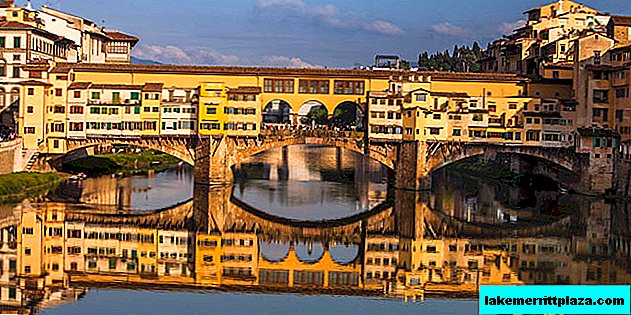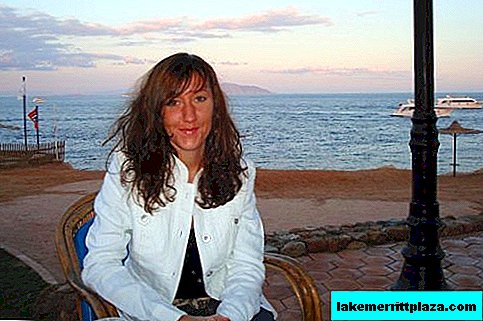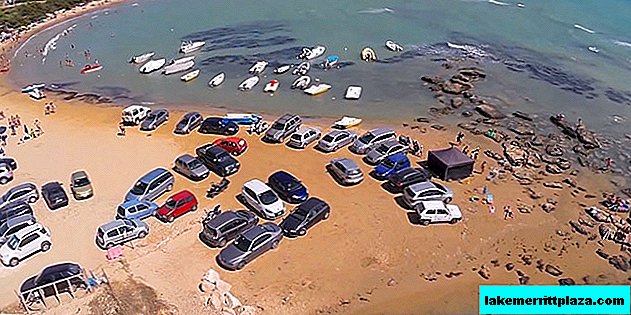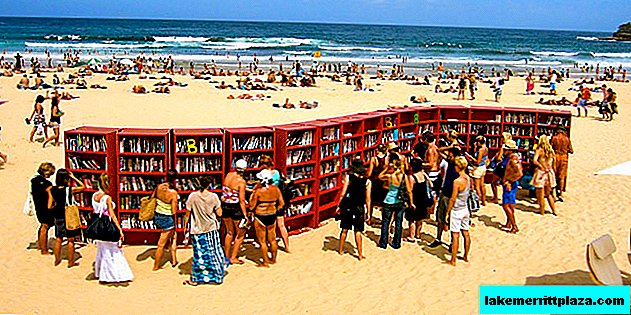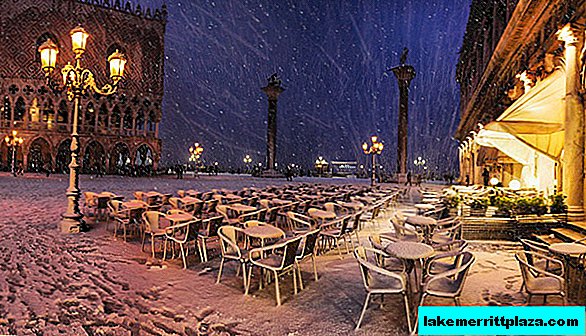The most famous attraction in Pisa is its Tower. It is known primarily because it does not stand strictly vertically, but at an angle from the main axis. Indeed, if not for this flaw, it would be unlikely that crowds of tourists would come every year to take a look at this, which has become a world-wide, “falling” attraction.
Not everyone knows that the “falling” tower is not a separate structure, but part of an architectural ensemble. In addition to the tower itself, which is actually a bell tower or Campanella (from the Italian word campanella, What means bell), it includes the Cathedral of Pisa (Duomo di Santa Maria Assunta), the Baptistery (Battistero di San Giovanni), the cemetery of Campo Santo (Campo Santo) and the square of miracles (Piazza dei Miracoli) on which it is all located. The bell tower is located near the northeast corner of the cathedral. And the whole ensemble is considered a world masterpiece of Italian architecture of the Middle Ages, which had a great influence on the development of culture in Italy.

The Leaning Tower of Pisa has been falling for eight centuries. Because of this, the Italians themselves call it the "protracted miracle." Deviation increases by one millimeter every year. And the whole building deviated from the axis by more than five meters, which is not so small. But, no matter what, the Campanella survived even an earthquake and today is open to the public.
Construction history
Since its construction, the Leaning Tower of Pisa has become almost a symbol of the city. Its construction began in August 1173, in the middle of a green meadow on the outskirts of Pisa, together with the city cathedral and the baptismal. Together with the breaks, the duration of the work was about two centuries. Finally, the bell tower was ready in 1370.
Who was the author of the original project is not known for certain. However, historical chronicles suggest that it could be Bonanno Pisano (Bonanno pisano). Today it is already impossible to determine whether the curvature of the building was originally conceived or formed as a result of subsidence of the soil. Although the second option looks more believable. Most likely, the original project was already wrong in that. And the tower was originally planned as vertical.

However, almost immediately after the construction of the first floor with a colonnade 11 meters high, the building began to roll to the south. And at first it was only four centimeters. After that, construction work was suspended and resumed only after 100 years. In 1275, when the lean of the Leaning Tower of Pisa was already 50 centimeters, they tried to rectify the situation. To do this, during the construction of subsequent floors, an excess of height of 10 centimeters from the side of the bank was laid. Unfortunately, this did not help much, and the construction of the bell tower had to be stopped ahead of schedule, having reduced it by four floors from the initial project.
Architectural features
The Roman-Pisan style of the Leaning Tower of Pisa impresses everyone with its grace and beauty. The height of its eight tiers after construction was 58 meters 36 centimeters. In the highest part, the height is 56 meters 70 centimeters, and in the lowest - 90 meters 90 centimeters.
The diameter of the base of the bell tower, having a cylindrical shape, is 15 meters 54 centimeters. The thickness of the outer walls at the base is 4 meters 90 centimeters, and at the top - 2 meters 48 centimeters. Its deviation from the vertical axis at the base level is 4 meters, and at the peak level - 5 meters 30 centimeters. 294 steps. And from there, tourists who have climbed the mountain, have a beautiful view of the Field of Miracles and the surrounding area.
The entire tower is made of stone and decorated with colored marble (light gray and white). At its entrance there are bas-reliefs depicting mythical figures of animals. The top of the lunette is decorated with a statue of the Madonna and Child by Andrea Guardi (Andrea Guardi) The first tier is bordered by blind arches with fifteen half-columns and decorated with caissons, inside which you can see rosettes identical to the decorations on the baptistery and the cathedral. The next six floors are surrounded by decorative Romanesque arcades. Their grace resembles Byzantine architecture. The building is crowned by a belfry cut through by arches for seven bells. Their weight ranges from 300 kilograms to 3.5 tons. In addition, each of them has its own name and tone. Subsequent joined him in the 16-17th centuries. By the way, they are all in working condition and still delight tourists with their ringing.
Bells
The very first was cast in the middle of the 13th century. His note is G flat, and the name is Paskverechcha (Pasquereccia) Second Terza (Terza) with a note C-sharp appeared in 1473. Little Vespruccio (Vespruccio) with a note mi smelted in 1501. Crocississo (Crocifisso) with a note in C sharp made by the master Vincenzo Posenti (Vincenzo Posenti), and in 1818 it was re-melted by Gualandi da Prato.

Dal Poco (Dal pozzo) - A note of salt was made in 1606. During the bombing of World War II, it was destroyed. After the war, it was restored and sent to the museum. And in its place in 2004 there was an exact copy. Assunta (Assunta) with a si note - the largest of the seven bells, appeared thanks to Giovanni Pietro Orlandi. The last belfry was replenished by San Ranieri (note re-sharp). Moreover, he was repeatedly subjected to remelting. The last time it was in 1735.
Since the cathedral, to which the Leaning Tower of Pisa belongs, is active, before every Mass, as well as at noon, everyone can hear the chime of these bells. Interestingly, in the Middle Ages, bells did not ring at the same time, but each in its own specially established liturgical hour.
Tower rescue
After the construction of the Leaning Tower of Pisa was completed, the city authorities faced a new problem: how to prevent it from falling?
This issue became especially urgent after the hurricane that swept over Pisa and moved the tower by a fraction of a millimeter in just one day. For this, a special competition was even announced among scientists, architects, and just ordinary citizens, which accepted ideas for saving the tower. The main condition for stopping the "fall" was to maintain the slope of the structure. Indeed, by this time the “protracted miracle” had become a symbol of Pisa and its main attraction. In response to the call, many proposals were received, and what was not there.
For example, the construction of a sculpture of a mountain architect near the tower to keep his unsuccessful creation. Or attach to the top of the bell tower a huge balloon that would support the structure without giving, thereby deviating to it. In one of the options, it was proposed to put a tram around the tower, which would weigh the soil with its weight, so that the tower would not give further shrinkage. A number of ideas came down to the construction of a similar tower near the Leaning Tower of Pisa, but with an inclination in the opposite direction, so that they support each other.
Of the strangest and most curious projects, of course, refused. Leaving only those proposals that relied on scientific achievements. At the end of the 20th century, the incredible efforts of scientists yielded results. It was found that under the south side of the base, the soil is much softer compared to the north. With the help of additional steel cables protecting the structure from falling, part of the soil from under the northern base was very carefully and painstakingly selected. As a result of the settling of the tower after preparatory work on the north side, the slope decreased by about 50 centimeters, rejuvenating the tower by a couple of hundred years. After that, the cables, counterweights and supports were removed. Today, the pride of Pisa is in almost stable condition.
Working hours
Due to the threat of destruction, visiting Campanella was banned in 1990. The reopening took place in December 2001.
Today, the Leaning Tower of Pisa is ready to receive tourists year-round.
- April-September: from 8-30 to 20-30.
- October-March: from 9-00 to 17-00.
From June 14 to September 15, there are separate nightly visits. From the close until 23-00. Such an initiative was introduced to allow tourists to enjoy the view from the observation deck of the Leaning Tower of Pisa at sunset. At this time, the city is lit by a thousand lights and appears in a completely different way.
Official site of the Leaning Tower of Pisa: www.opapisa.it/it/la-piazza-dei-miracoli/torre-pendente/larchitettura.html
How to get inside - the cost of tickets
Due to the fact that tens of millions of euros were spent on trying to save the Leaning Tower of Pisa, the cost of visiting this attraction is also rather big. Today it is 18 euros and is projected to only increase. Having decided to go inside, do not forget that at the same time there can be no more than 30-40 people.

Despite the considerable cost, taking care of tickets is still in advance. Excursions are most often already scheduled for the day ahead. And arriving at the tower early in the morning, you will have, at best, the opportunity to take a ticket for the evening. In the summer, the situation only gets more complicated.
Inside tower
It is worth to come to the place where the excursion to the Leaning Tower of Pisa begins. This is due to the fact that you have to (necessarily) hand over all things to the left-luggage office (it is located in the neighboring building). You can only take a photo or camcorder with you. And women's handbags (including the smallest ones) are under the strictest ban.
Perhaps this was done so that the visitors of the tower did not have a desire to put themselves in the place of Galileo and throw something from the top.
Going inside you can see that the foot of the stairs is quite wide. It rises up the inner circumference of the tower. Despite the fairly comfortable steps, many people get dizzy over time. All the time I want to grab the walls on both sides, so as not to fall. The steps are made of natural marble. However, since this material is mainly used for decorative purposes, it could not withstand the pressure of millions of visitors, and in some places has strong wear. With each step, the width of the stairs decreases. On the last tier, it is at all about 40 centimeters.

Inside the tower is hollow and a staircase spirals around it. Inspection windows are equipped along the inner wall, allowing you to look into this frightening emptiness. After the fifth tier it is allowed to go to external viewing platforms. For reliability and safety, they are tightened with mesh and fences. Some remain in the belfry (penultimate tier) and do not rise to the very top. But in vain. Because those who overcome the last test, from the opening view, are simply breathtaking. The net is absent, and the height of the fence is only waist-high. Nothing prevents you from enjoying the view. The cross of the cathedral is visible at a glance. And only at the very top you can realize how rough the surface is under your feet.
After the pleasure, you should take a deep breath and get ready for the last test - the descent down. On each tier there are special people who regulate one-way traffic. That is, the movement alternately goes either up or down. Getting down is harder. Exhausted marble is an excellent base for gliding, increasing the chance to slide down. Therefore, be very careful.
If you don’t feel the strength of climbing to the top, try visiting the Fish Hall. The room was so named because of the fish depicted on the bas-relief located inside. The hall was closed for visitors for a long time, due to the devices inside it, with which they constantly monitored the slope of the tower. A hole in the ceiling allows you to observe the starry sky over Pisa during an overnight visit to the tower.
An evening visit to the Campanella includes a visit to the Santo Campo Memorial Cemetery. It is used not only for the burial of the dead, but also for life training seminars. There you can inspect and ponder the cycles of frescoes on the walls with special lighting.

How to get to the tower
- The Leaning Tower of Pisa is located at: Piazza del Duomo, 56126 Pisa
If you are planning to visit Campanella, and it is located slightly away from the main tourist routes, try to allocate at least a day for this. Indeed, in this small town is not only a leaning tower.
From the station to the main attractions of the city you can reach in 40 minutes on foot. If you do not want to walk on foot, then you can use public transport. He will take you to the station Pisa Rossore (Pisa Rossore) from which to the right place at your fingertips.
- See instructions: how to get from Pisa airport to the center
Interesting Facts
Why is falling
One interesting story is connected with the appearance of the Leaning Tower of Pisa. She tells how the masters of Pisano were asked to design and build a bell tower for the cathedral under construction. The architect did his best. He erected an elegant tower as straight as an arrow. However, the Catholic clergy who ordered this work did not want to pay the master. The frustrated architect turned to leave. But in the end, he turned around, waved his hand and said to the tower: "Come with me!" And in front of astonished witnesses, the campaigna leaned in an attempt to take the first step.
Galileo Galilei
It is also reliably known that it was in Pisa in 1564 that the famous scientist in the future was born - Galileo Galilei. Historical chronicles tell that at that time it was still just a physicist and philosopher who conducted various experiments with the help of the Leaning Tower of Pisa. He threw objects of various weight and volume down from the top of the bell tower in order to prove his theory that the weight of the body falling down does not affect the rate of fall.
The entire architectural complex, which also includes the Leaning Tower of Pisa, was given UNESCO World Heritage status at the end of 1986.
It turns out there are three of them
Surprisingly, the “falling” buildings, namely the bell towers in Pisa, are not one, but three. We have already discussed the first in detail. The second is located in the pine park Piagge (le Piagge). This is the Campanilla of the Church of St. Michael (San michele degli scalzi).

The third bell tower was lost on the oldest street of the city and belongs to the church of St. Nicholas (San nicola) Its curvature is not so "striking" because of other buildings densely surrounding it. All structures gave a roll even at the time of construction in the distant past due to the heterogeneity of soil and groundwater.
All in all, about 300 “falling” towers can be found in the world. Among them are the clock tower in Izmir (Turkey), Big Ben (England), the towers of Bologna, the tower of Nevyansk (Russia). However, it is the “falling” that gained the greatest world fame Leaning Tower of Pisa (Torre pendente di pisa).
Photo on the background
And finally, a reminder: do not forget to take a picture with the leaning beauty of Pisa. After all, the photos on her background have become almost classics. With some effort, you may even be able to straighten the tower. After all, the angle of inclination in the photo, the angle of inclination will depend on the side from which the picture was taken. For example, if you stand on the north or south side of the campaign, then next to you will be a completely flat structure. But the western and eastern sides provide the opportunity to see the "highlight" of the sights in all its glory. Having shown your imagination or at least having wandered around the Internet beforehand, you can undoubtedly create your own composition with the Leaning Tower of Pisa.

How to get to Pisa
- from Rome: fastest on a high-speed train from Roma Termini FRECCIABIANCA Central Station for 37 euros - travel time 3 hours, or regional for 23 euros - 4 hours. When planning a trip in 2-3 months, you can buy a ticket for a high-speed train for only 9 euros. Also, an electric train, valued at 22 euros, departs daily from the Roma Trastevere station. Tickets are bought directly at the station for a maximum of 7 days.
- from Florence: From the Firenze Santa Maria Novella station, an electric train costs 8 euros every day 2 times, the journey takes about an hour.
- from Milan: from Milano Centrale station, the fastest train is FRECCIAROSSA with a change to the train in Florence at Firenze Santa Maria Novella station.Travel time is a little more than 3 hours. The cost is 48-65 euros (27-37 euros for 3 months) depending on the time of day. A slower option is a regional train for 34 euros (9 euros in advance), 4 hours on the way.
- from Rimini: most likely you will have to travel with transfers in Bologna and Florence, as there is no direct connection. The road will take you about 4 hours. The cost of one-way tickets is 39-53 euros. An alternative is to rent a car at the airport for 50-60 euros per day to get under your own power without becoming attached to trains. Find the most profitable car rental option in Italy.
- from Genoa: from the Genova Piazza Principe station by regional or high-speed train for 15-20 euros. Travel time is about 2 hours.
You can check the current train schedule in Italy on the official website www.trenitalia.com in the TUTTI I TRENI section. See instructions on how to buy a ticket in Italy yourself without intermediaries.
Where to stay in Pisa?
Most often, tourists come to Pisa for one day, this option allows you to tick off and take a picture against the background of a falling tower, but in order to visit other equally important sights of the city and to feel its atmosphere, we recommend that you stay in Pisa for at least 1 day, booking Hotel on Booking.com. The cost of decent overnight options in the range of 60-100 euros. Through a special link you can find the hotel near the tower. As an idea: come to Pisa for lunch, take a walk around the city, look around, have dinner in the evening, and at dawn walk and take pictures at the most popular places. Coming to the hotel for breakfast and home.
Have a nice trip and photos!


